
Picking the right Android smartphone is an ongoing dilemma, but it gets even more complicated as we approach the Fall and Winter. The LG Optimus G is by no means a small contender, but it is going head-to-head against beasts like the Samsung Galaxy Note 2, Galaxy S3, HTC One X+, Motorola DROID RAZR Maxx HD and the upcoming new Nexus (which is said to be a variant of the Optimus G).
We have to give it to LG for stepping up it’s game this time around. Though it has great potential, the Korean manufacturer’s history hasn’t given it the best fame. We can clearly see the company has gone back to the drawing board this year, approaching the market with a much more solid plan, better devices and a new approach.
On paper, the LG Optimus G has what it takes to take out many (if not all) of the devices listed above. The hardware is stunning, but we know it takes much more than a surprising list of specs to make a great device. So is this the phone that will lure you away from the top super phones? Will LG finally get closer to being in the top 3 list of Android manufacturers?
I have spent some good quality time with this bad boy, so let’s jump in and see how it gives justice to its hype and specs.
Build Quality
I am a fan of HTC devices for one main reason – build quality. A well-built device can be recognized as soon as one picks it up for the first time. The LG Optimus G happens to be one of those phones, but not in a very different sense. LG seems to have found the perfect balance with its latest devices, with much better build quality compared to its past portfolios.
The LG Optimus G is light and thin, but not as much as Samsung phones. Likewise, it is strong and feels solid, but not as much as HTC smartphones. In a way, it creates this illusion of being both light and thin, as well as strong. Probably due to the fact that its weight is very well balanced, making it feel very good in the hand.
The device’s materials consist of glass, plastic and metal. It is not a uni-body design, but it definitely feels like nothing is loose or out of place. It is very well and tightly assembled. The power button on the right and volume rocker on the left don’t feel loose and give subtle but firm feedback when pressed.
 There is only one design flaw, though. The notification light is a ring that surrounds the power button. It has a very unique placement, and I must admit it looks really good… but only when you can see it. The power button and notification light are tucked in the top right side of the device, making it unnoticeable from most angles; many times defeating its purpose.
There is only one design flaw, though. The notification light is a ring that surrounds the power button. It has a very unique placement, and I must admit it looks really good… but only when you can see it. The power button and notification light are tucked in the top right side of the device, making it unnoticeable from most angles; many times defeating its purpose.
Also, the Optimus G forgoes the advent of on-screen buttons for the traditional Back, Home and Menu capacitive buttons placed right under the screen. Some of you may love the on-screen butons a la the Galaxy Nexus, but I happen to like being able to get more screen real estate by pushing them out of the screen.
Display
What is a good device without a good display, right? The screen is what you interact directly with while using your phone every day; this makes it one of the most important factors in a good smartphone experience. The LG Optimus G definitely has what it takes to compete in this department, but this happens to be a very subjective topic.
There is no denying it – the LG Optimus G has a gorgeous display. It sports a 4.7-inch True HD IPS+ display with a 1280×768 resolution. This translates to a 320 ppi (pixels-per-inch) pixel density and a 15:9 aspect ratio. The pixel density is impressive considering the iPhone 5 (known for its highly dense pixelation) sports 326 ppi. Letters are crisp, HD videos look great and the average person can’t see individual pixels with the naked eye.
As for the aspect ratio, it may not fit the 16:9 standard, but the slightly wider screen may feel better. I always felt like 16:9 device are too thin and tall, and the black bars on the top and bottom while watching a movie are not thick enough to become bothersome.
Colors may seem a bit washed out to those used to a Super AMOLED display (like me), but IPS+ displays offer natural and realistic colors. I prefer saturated colors and deep blacks, but I was very pleased with the Optimus G’s display after getting used to it. The blacks are nothing like the dark AMOLED ones, but I must say they are very close. And though the colors are not saturated, they feel very natural, bright, vibrant and pleasing to the eye. You get the “True-to-Life” viewing experience.
Performance
The device’s titanic specs measure up to a rather pleasant and smooth experience. That 1.5 GHz quad-core Snapdragon S4 Pro processor and 2 GB of RAM make this phone scream! Anything you do in this device is going to be fast and with very high frames-per-second. I have seen no hiccups during my time with this phone. Not once has it slowed down (at least in the usual way — we will cover more in the Software section), and I haven’t seen a single force close.
Pinch-to-zoom is fast, opening apps is fast, games load quickly and it is an overall a beast of an Android phone. This device is fast, guys. It will not disappoint in this department.
Software
This is an area in which the Optimus G has its ups and downs. The device does come with Android 4.0.4, which is simply unacceptable for a smartphone released during late 2012. To make matters worse, we have no news on a Jelly Bean update, and LG is not exactly famous for rolling out updates in time. We are sure this phone should at least get Android 4.1 in the near future, though; it certainly can handle it, and deserves it.
Regardless, the older Android version is compensated with some custom UI features that could make your experience much more unique and exciting.
Aesthetics
As Android fans, we love vanilla Android. That is not to say there isn’t a warm and cozy place in our heart for a good manufacturer UI, though. Sometimes manufacturers can bring enhancements and features that slip through Google’s hands, mostly due to the fact that the Search Giant tries to keep the experience cleaner and simple.
I must say that while I have always preferred vanilla Android, LG’s custom UI is not as obtrusive as it may seem. I certainly prefer it over Samsung’s TouchWiz; but then again, that is also a personal preference. But no one can deny LG’s UI has some helpful features you might grow to love.
The lock screen has 4 customizable shortcuts and one can add a series of calendars and clocks to it (think of it like a widget in the lock screen). The pull-down notification area has quick settings buttons, which we have definitely seen before. These can be changed and re-arranged, though, making it more convenient based on personal needs.
The app drawer is a bit of a lackluster in my opinion. It is not the best-looking, and it can be a bit bothersome at times. This is mostly because the apps follow no order, they are not automatically arranged in any order. One can manually arrange them, which would be a great feature for those that want their most used apps to be in the first screen, for example. But I prefer my apps in alphabetical order.
Now, it is possible to hit the settings button and sort them by alphabetical or installation date order, but you have to sort them again when you download new apps (which get sent to the end of the grid). Repeating the process can become a bit tedious, so it would be an awesome treat if LG would let us organize the apps automatically.
Looking at things on the brighter side, I do happen to like the settings menu. It is arranged in tabs, which allow you to jump between settings categories. There are four tabs on top: Networks, Sound, Display and General. I found it very convenient, easy and fast to be able to access different settings with LG’s tab view. And if it is not to your liking, you can easily switch to List View by pressing the menu button.
And while we are talking about customization, the UI even lets you personalize your icons! Just press and hold any icon in your home screen and a little paint brush image shows up in the corner. Simply tap it and you can select an icon from the available options, your gallery or a picture taken with the device. Neat, right?!
Unique Features
We have already shown you a couple of LG’s features; one being QuickMemo and the other QSlide. QuickMemo allows you to take a screenshot of the device and writing/drawing on the image for quick sharing. QuickMemo can be accessed from the notification bar or by pressing volume up, volume down and the power button at the same time. You can also use it in Overlay Mode, which is the same idea, but one can jump out of the screen shot while keeping the writing over the UI.
QSlide allows users to watch a video while they using other apps. Unlike Samsung’s Pop-Up Play, QSlide looks much like an overlay. It puts the video above the UI and one can then play with the opacity to make the video more/less transparent.
Other important features include Live Zooming and Screen Zooming. The former allows users to zoom in on videos by using pinch-to-zoom. I rarely used it (outside of testing purposes), but it can be very helpful for looking at more detail while watching a video or movie. Screen Zooming might help those without the best vision, as it allows you to pinch-to-zoom on text messages and images to change the font and size of the subject.
Those are the main features that separate the LG Optimus G from other devices. Some are gimmicks, but they definitely keep the device more interesting. I am particularly fond of QSlide and QuickMemo. I do wish QSlide would work with other apps like Youtube and Netflix, but that is outside LG’s power as those are not the company’s apps.
Software Problems
I did find a couple of small issues, though, which mostly seem software related. First, the screen would become a bit unresponsive at times, but not in a way that it won’t recognize touch. Take scrolling as an example — it would not stutter and jump while scrolling through apps, but suddenly scrolling would become slower. It’s as if it suddenly wasn’t registering the speed at which my finger was moving. The problem would go away after turning the screen off and on, though, making it feel more like a software bug.
There also seems to be a small bug with the brightness. I always had automatic brightness and Eco-Mode off, but the brightness would sometimes go dimmer and come back to normal after a few minutes. This might be a feature as the Sprint version would usually not let you set the brightness too high when the device is hot, but it is still a bit annoying.
Camera
Picture/Video Quality
The AT&T LG Optimus G doesn’t have the same stunning 13 MP camera the Sprint and international versions were blessed with, but its 8 MP camera still does the trick. As you may know, picture quality doesn’t depend much on megapixels and the sensor quality is much more relevant. More MP simply translates to a larger photo.
With that in mind, we thought the Sprint and AT&T variants would be pretty similar in terms of picture quality, with the only difference being the size. During full daylight both cameras perform magnificently. The pictures are clear and colors are bright, though sometimes both versions can take some blurry photos (especially when moving or shaking). The only main difference is that the 13 MP pictures look clearer when you zoom in, but that is obviously due to the higher megapixels. (See our comparison post.)
In terms of quality they are almost identical. We would have to say the picture quality is still not up there with the HTC One X or Samsung Galaxy S3, but it is definitely getting close. And yes, that is saying much considering the fact these phones challenge many point-and-shoot cameras.
We realized there is much more of a difference between the AT&T Optimus G’s camera and the others though. When the sun goes down and you start taking pictures in dim and low-light conditions. There is much more than mere megapixels that separate these devices’ cameras. We found that the 13MP sensor in the Optimus G took better pictures in dimly lit rooms (artificial lighting), with much crisper images and more accurate colors. The AT&T version did perform better for outdoor night-time photography, though.
Video quality is much better. The device does record at 1080p full HD, and the image is very crisp, clear and records at a very good frame rate, so you won’t be disappointed with your home videos and party movies.
Features
But let’s get past quality and jump to other features. Chances are you won’t be comparing pictures with those of other devices, and the AT&T Optimus G does very well on its own merits. The software does come with some features that may improve your experience while using the camera.
I found Panorama and Time Catch Shot modes to be the most exciting. The first does the obvious, but the latter feature is a bit more exciting. It actually saves a few images of what happens BEFORE you press the shutter button. Ever miss that perfect picture because you didn’t pull out your phone fast enough?
Well, with Time Catch Shot you are able to retrieve those lost moments most times. Quite impressive, I must say – even though many times they pictures can be a bit blurrier than one would hope. I felt like Continuous Shot performs better in terms of quality (this mode is pretty much burst shot mode, but limited to 6 shots at a time).
There is also HDR mode but it is seriously underwhelming, especially for those of us who are used to seeing professional HDR photography. It seriously looks like any other picture, except with a bit better colors and highlights. Oh, and there is also Cheese Shutter, which takes a picture when the phone detects someone saying “cheese” (other words also work; like whisky, LG and smile). That one is pretty fun for parties and pictures of the kids.
1.3MP Front-Facing Camera
The 1.3MP camera in the front serves its purpose. It is great for video chats and casual self-portraits. The video is very good with a 720p HD resolution, as well.
Is It a Good Camera Phone?
Overall, the camera is good on its own. Some features are fun and helpful, but I felt like many of them took bad photos; hence, defeating the purpose. And if they didn’t there was not much of a difference from “normal” mode, with panorama being an obvious exception. You are better off manually playing around with the settings if you know a bit about photography.
Sound Quality
As a personal media device, the phone performs well. I have definitely heard better, but sound quality is something one usually has to give up when purchasing any thin device (whether it is a TV, tablet or smartphone). The volume is loud; it won’t “fill up the room”, but you can definitely hear the sound and enjoy it from afar.
 Real audiophiles care for much more than volume, though. If you are one of those you should have your high-quality headphones ready because you probably won’t be happy with this device’s speaker. Base is minimal, there is some noticeable distortion/vibration in voice and treble, and the speaker is easily muffled when the device is facing up on a flat surface (flat back, where the speaker slit is).
Real audiophiles care for much more than volume, though. If you are one of those you should have your high-quality headphones ready because you probably won’t be happy with this device’s speaker. Base is minimal, there is some noticeable distortion/vibration in voice and treble, and the speaker is easily muffled when the device is facing up on a flat surface (flat back, where the speaker slit is).
But if you can put all the technicalities aside and don’t “have an ear” for these details, the Optimus G will please you. The sound is loud enough to be enjoyed under most circumstances, and the quality is good for the average movie and song.
Ports & Connectivity
The most important differentiation for the Optimus G is the fact that it has a microSD slot, which the Sprint version lacks. Sprint’s Optimus G has a better camera, though, so the choice is yours: better camera or expandable memory?
Everything else packed in this phone has what one can expect from any high-end smartphone – LTE connectivity, GPS, Bluetooth 4.0+LE, WiFi 802.11 a/b/g/n and NFC. They all work as they should; GPS locks quickly, WiFi is fast and doesn’t lose connection, and NFC works with tags and Beam. The only issue I found is that LTE is a bit spotty, but that may be due to my area and isn’t the device’s fault.
Battery Life
On average, battery life is surprisingly good. I happen to live in a spotty area for AT&T, so the device was spending a lot of energy jumping in and out of HSPA+ and LTE, but when those problems were out of the way I averaged about 10-12 hours on a single charge.
This is without trying to conserve battery. I did try to use Eco Mode for a while, which conserves battery by dynamically managing processor power, but I honestly didn’t see much of a difference. It might have helped a little, but it wasn’t a drastic enough change to be noticed (in terms of both performance and battery life).
What did make a change is the use of WiFi, though. Now that my battery tests are over and I turned WiFi on, the device is sitting at 63% after a bit over 9 hours of use. With that said, the device does offer the battery life and efficiency LG promises. We wish the 2100 mAh battery was a bit beefier since the device doesn’t have a removable battery, but that is another sacrifice one has to make for a thin, good-looking smartphone.
Conclusion
All in all, the LG Optimus G is an awesome device, but we have to keep in mind it is competing with the highest-end devices of late 2012. With that in mind, we can confidently say this is among the top 4 smartphones to get – a great accomplishment for LG. The performance, display and design are simply stunning, but like every other device, it has its downsides.
The camera could be better (it doesn’t quite match the HTC One X+ and Galaxy S3 yet), like the one in the Sprint version, but LG makes up for it by adding a microSD card slot. It is a matter of choice, and I happen to prefer expandable storage over a good camera.
Software is also a bit outdated featuring Ice Cream Sandwich, but you can find a good series of custom UI features that may make up for the lack of Jelly Bean. And though it has some software bugs, we can expect LG to fix them with an OTA update.
 The recently-released and upcoming devices all have something that makes them stand out. You want a stunning display? Get the Note 2; if build quality is your priority, then the HTC One X+ is probably the best; and there is no doubt the DROID RAZR Maxx HD is the best option for battery life. So where does the LG Optimus G fall? Right in the middle of everything.
The recently-released and upcoming devices all have something that makes them stand out. You want a stunning display? Get the Note 2; if build quality is your priority, then the HTC One X+ is probably the best; and there is no doubt the DROID RAZR Maxx HD is the best option for battery life. So where does the LG Optimus G fall? Right in the middle of everything.
This is actually a good place to be in, as the device isn’t polarized and tucked into a specific niche. It takes part of all the best features from the competition and mixes them into one all-around great smartphone. What makes the LG Optimus G stand out is it’s overall quality as a smartphone, not any specific features.
It is well-sized (at least for today’s standards), thin and light, its performance is astounding, it has a great screen and the build quality is solid. And for those that still make calls regularly, voice quality was crisp and clear from both ends and I didn’t have a single call dropped. Software is a give or take, but it is definitely better than TouchWiz.
Plus, if you want to cover that small downside, you can always wait for that rumored LG Nexus, which is said to be a Pure Google device based on the Optimus G. It would be perfect for those that simply want a good high-end device on AT&T, without all the extravagant bells and whistles that may make it gimmicky.
If you find this is the phone for you, it will be available straight from AT&T on November 2nd. Pre-orders did open on October 16, though. You can put your name on an LG Optimus G right now if you go to AT&T’s website!

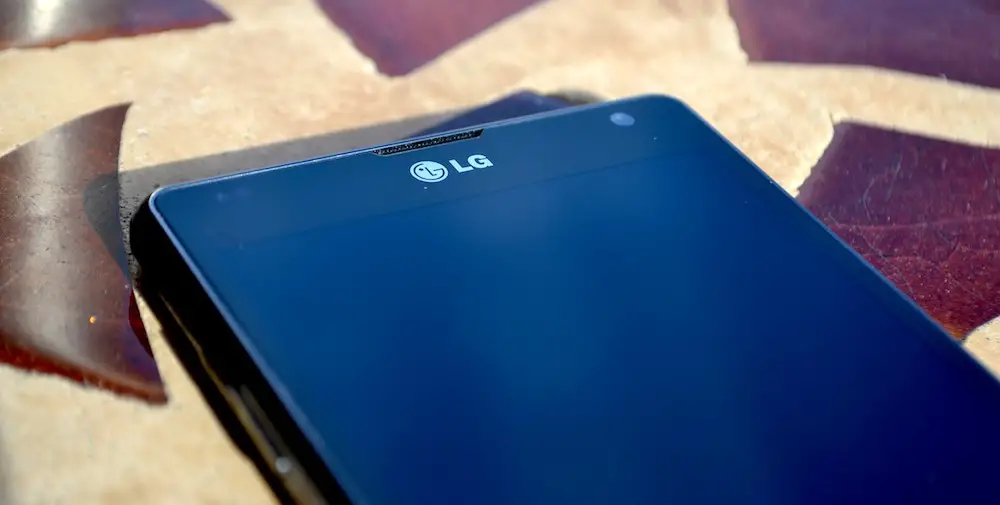

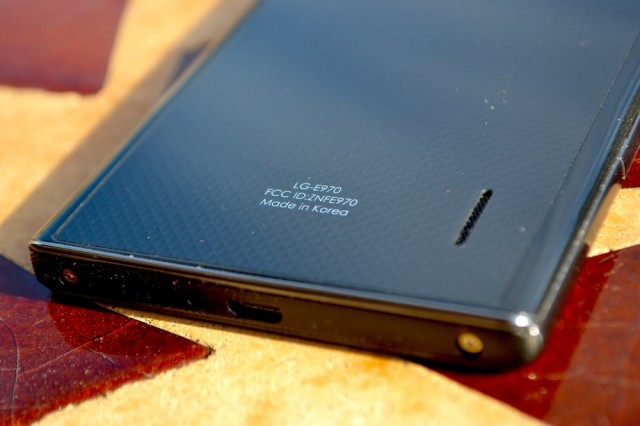










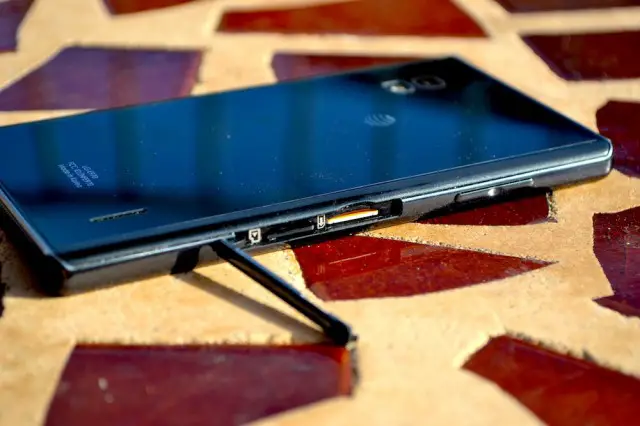
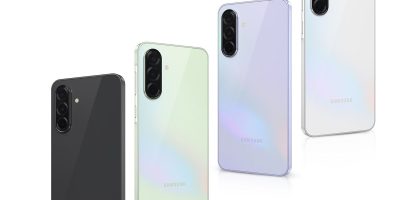


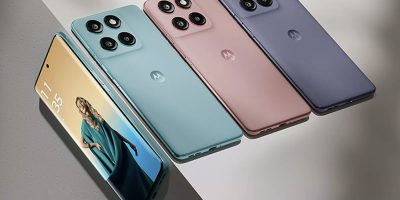
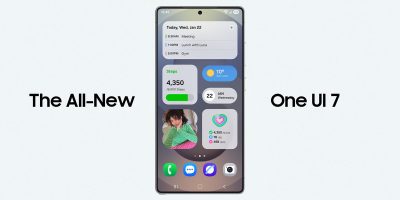
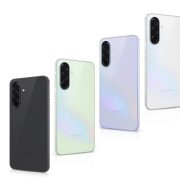
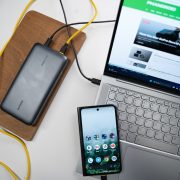

I can’t help but notice how much this looks like the iPhone 5. More stolen technology!
Just kidding!!!
lame joke in bad taste
Lets see you do better Mr Leno
There is only one Android phone. The Nexus. That is all.
If LG is making that now, wtf is the point of this.
The problem with the Nexus is it’s only offered full price on AT&T and T-Mobile. Sometimes people need carrier subsidized phones, in which the Optimus G is a great option.
I disagree. I can’t tell you how many times I’ve wished to have a feature from this phone or that phone on my Galaxy Nexus. Many of them I can get through the Play Store and rooting, but some of these phones have an X factor that simply can’t be emulated.
The Galaxy Note 2, for instance — that phone is going to have a huge X factor over just getting the Galaxy Nexus or Nexus 4. I know the popular thing to do is to rag on OEM customization, and believe me — if it’s bad, I will call it out.
But in this day and age I don’t see a lot of these OEM skins being a detriment to the Android experience as much as they are an enhancement. Also remember that this is always a very subjective topic. A lot of people I know don’t even like stock Android.
I have no problem with OEM customizations and I feel that it adds to the experience a lot of the time. But I don’t always like the intrusions when they’re overly gimmicky (like TouchWiz feels sometimes) and sometimes they just look lame. However, it seems OEMs are getting better at this game and are offering less intrusive experiences tat add some useful features. For the most part custom skins are a non-issue.
The real argument for the Nexus models should be carrier bloat though, since the OEM models that are similar to the Nexus models appear to be gifted with exceptionally more bloat.
Looking at my options though I’m finding the Razr HD quite a compelling sell and I may go with the Razr if the LG Nexus is disappointing when it debuts. Ultimately I’m just glad I have an upgrade that came due as this is a great time to buy a new phone!! Now if I can just hold out till the holidays to see if Verizon will be handing out extra data since they’ll be forcing me to lose unlimited and go for an incredibly short sighted share plan. But that’s another rant for another day.
dude stfu
Edgar, You may not be able to do this since it might be a lent phone but can you confirm that the bootloader is locked? This is the only thing keeping me from putting in a preorder. You are the only person to seem to have the phone in hand..
Sadly, the bootloader is locked. :(
its a decent device even without root…u dont have to root every device that drops
“The blacks are nothing like the dark AMOLED ones, but I must say they are very close”
Which is it, make up your mind!! lol
LOL. Well you can tell the difference between them. You can definitely notice the blacks on the LG Optimus G are not BLACK. There is that slight grayish hue. But for not being AMOLED, they are pretty deep.
yea they are dark grey but the rest of the colors are less saturated while on the Amoled screens they are over saturated , they look good but not very realistic compared to LCD panels, Amoleds give whites a blueish tint again due to that over saturation while on LCD’s they are closer to their true color. Their are pros and cons to Amoled and Lcd’s, it really just comes down to preference, Pure black and color saturation or better whites and less color saturation. The reason why Amoleds have pure blacks is because the pixels are actually turned off completely that’s why when you view a black pic on a Samsung phone it looks like the screen is turned off because all those pixels actually are, so if you want better battery life on your phone use a wallpaper with a lot of blacks. Also Amoleds have a less intense level of nit or brightness because they don’t use back lighting like LCD’s do
if you have used a samsung superamoled screen you know what proper blacks look like. however LG’s displays are close but not quite there just yet. its like playing silent hill with a led lcd tv and a plasma. nothing can beat a plasma when it comes to blacks…
Quad Core S4 and 2GB Ram
The screen looks great. Tired of small screens!
You lost me at HTC and good build quality.
First time I’ve watched one of your reviews – nicely done, man.
lol @ Chula-juana. So-Cal checking in – Mission Valley FTW, baby :p
The display is so tasty i want to lick it >.>
ok love the cam and the big screen is a + also. ;)
can’t wait for the nexus version of this phone!!!
Like the screen
I think it has a very nice design.